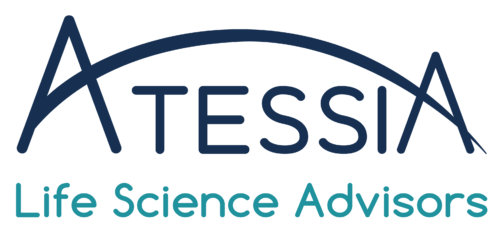| French always do it different In many domains, French people like to stand out, either in a positive or negative way. In the Healthcare field, France has set a system that is highly effective, and very protective for the patient, but at the price of a heavy state involvement and of one of the most complex regulations. As a result, understanding the regulatory specificities of France is key for entering the French market. ATESSIA can help you in this process and provide you assistance and expertise. Here are a few areas where France follows its own, often complicated and restrictive, rules. |
The substances used in a medicinal product intended for the European market, including for export, are defined as raw materials for pharmaceutical use (RMP). They can be active (active substance) or inert (excipients).
Whether the medicinal products are intended for human or veterinary use, only active substances manufactured and distributed in accordance with European Good Manufacturing Practices (GMP – Part II) and Good Distribution Practices (GDP), introduced by article L.5138-3 of the French Heath Code, can be used.
Thus, when applying for a marketing authorization or for certain applications to modify the marketing authorization, the notice to applicants requires the submission of a signed QP declaration by the qualified person of the manufacturing site and/or of the certification of the batches of the finished product attesting that the active substance used is manufactured in accordance with good manufacturing practices.
Concerning the excipients used in medicinal products for human or veterinary use, there is no enforceable standard in the national or European regulations and they are not subject to the QP declaration in the marketing authorization file. It is up to the manufacturer or distributor of the finished product to define its quality system the applicable standard(s) for the manufacture or distribution of the excipient, according to its/their intended use(s). This exercise will be carried out in consultation with pharmaceutical users on the basis of the results obtained during a formal quality risk assessment (GMP point 5.29). It should be noted that ANSM recommends, at a minimum, the IPEC/PQG GMP & GDP reference systems.
However, it is recognized that for some raw materials, their pharmaceutical use may represent only a minor fraction of their other industrial uses (agri-food, cosmetics or others). Thus, their producers may not have the objective of meeting the specific requirements of pharmaceutical customers.
The EMA’s Q&A Part 1 reaffirms that compliance with the above-mentioned standards is a legal obligation and that, in the event of difficulties in guaranteeing a supply of satisfactory quality, alternative GMP sources must be sought out, qualified and, if necessary, registered. In the case of a source identified on European territory, the establishment must apply for authorization or registration from the competent authority of the Member State in which it is established. In case of import from a third country to the European territory, the source of the identified active substance will be conditioned by the provision of a written confirmation from the competent authority of the exporting third country.This document attests that the applicable standards are at least equivalent to the GMP defined by the European Union.
In exceptional circumstances these same EMA Q&A Part 1 introduces the possibility for manufacturing authorization holders (of the finished product) to assess and document the extent to which GMP is met, and to provide a risk-based justification for the acceptance of any deviation. At the MA level, the QP declaration should detail the rationale for stating that the standards applied provide the same level of assurance as GMP.The EMA will collect the experience gained with this approach, which can be used as a basis for discussion of possible future related changes to the guidelines.
However, at the national level, the ANSM does not, for example, explicitly provide for derogations or for exceptional circumstances, unlike the EMA for centralized MA. When informed in advance of a particular context (such as medicinal products of major therapeutic interest or the absence of a therapeutic alternative), the competent authorities could then request additional information or carry out an inspection to ensure that the establishment complies with the standards in force in the Union. Thus, this situation can only be transitory, since these alternative sources (in the EU or in third countries) and/or their principals can request an express request for an inspection of the raw materials from a competent authority of one of the member states in order to obtain a certificate of conformity.
The control of the supply chain is the key word. Deficiencies in the qualification and monitoring process of suppliers and/or manufacturers of raw materials are regularly the subject of injunctions issued by the ANSM against pharmaceutical establishments (2 for the year 2020 and 3 for the year 2021). For the alternative identified source, this may be a hindrance (compulsion to comply with the opposable standards) or an opportunity (to comply with them in order to enter the EU market for UPMPs). A mutualization of supplies (and on-site audits) can also be an interesting approach to encourage the source to seize this opportunity.
Article written by Lorraine BALIN, Senior Regulatory and Pharmaceutical Affairs Advisor

